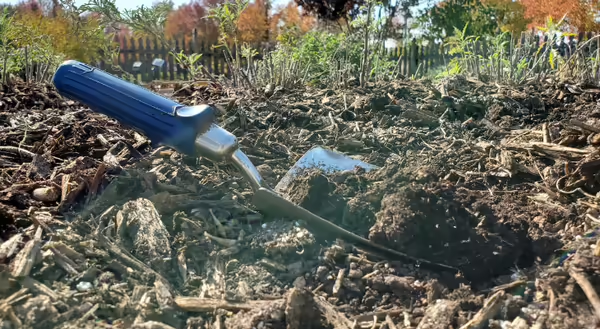
As the gardening season winds down, it’s a great time to reflect on the past year and look toward the future. Soil tests are a great way to put some data and insight behind decisions for next year. I often test in fall under the assumption that my tests will account for the past year’s soil use and help to estimate what soil may be like next year.
This is an excellent way to take the pulse of your soil now or collect a data point to reflect on later. In addition, it offers a window into plant health, as soil health is often tied to many common plant ailments.
Taking the Pulse of Your Soil
Interestingly, a lot of gardeners I talk to rarely test soils or many times have not ever tested their growing areas. Yet, many of these same folks regularly add fertilizer to their garden soil as a means of keeping plants healthy and productive, especially in vegetable gardens since these plants often have high nutrient demands.
Overfertilization and the subsequent offsite movement of excess nutrients into our streams and rivers is a major water quality issue nationwide. Although a large amount of this non-point source pollution is typically attributed to industry, some research has shown alarmingly high levels of nutrient runoff from urban areas in recent years. So, it is still important for smaller-scale lawn and garden applications to stay within recommended limits.
One way we, as home gardeners, can address this water quality concern is through the use of soil tests and appropriate fertilizer applications based on the results. In many cases, soil test results that I see from around central Illinois show more than adequate nutrient levels, especially for potassium and phosphorous, indicating little need for most fertilizer application. Vegetable production areas can become depleted over time, but most landscape samples I see need very little in the way of fertilizer.
Recognizing Signs of pH-Driven Nutrient Deficiencies
Perhaps a bigger question in landscape soil analysis lies in pH levels. Whether it's trees and shrubs or perennials supported by these soils or even lawns, I rarely see a sample that falls below the recommended nutrient levels. However, I do regularly see elevated pH, which can affect a plant’s ability to uptake nutrients. In some cases, a nutrient may be plentiful in the soil, but it may be unavailable to plants due to pH levels.
The best example of pH-driven nutrient deficiency in landscape plants can be seen with iron chlorosis. Plants suffering from chlorosis show yellowing leaves that often retain their green color along the leaf veins, which is the classic indicator. In these cases, plants are suffering from an iron deficiency, which results in yellowing foliage, a general decline in vigor, and sometimes death. However, iron is a major constituent of our soils. It's incredibly plentiful yet unavailable to the plant since the pH is elevated and the plant simply cannot take up iron in the soil.
Iron chlorosis is an extreme example, where iron is nearly completely unavailable to the plant, but in other cases, nutrient uptake may simply be limited to some extent by pH. Based on extensive research, we know the pH range of optimal uptake for most plants and soil nutrients. Since it’s a range, there are times when pH is getting toward the upper (or lower) end of the available range, and while the plant can get some of the needed nutrients, it may not be getting enough. We may not see as stark of an indicator as chlorotic, yellow leaves, but often, we can tell the plant is struggling from slow growth, smaller leaf size, some minor dieback, or other indicators of low vigor. Many of us want to start looking for an insect or pathogen as the cause, but pH may be one of the underlying contributors.
So, I often recommend a soil test when clients call our office seeking help with plant problems. They are relatively cheap yet provide ample data to better paint the picture of what’s wrong with ailing plants.
Choosing a Reliable Soil Testing Lab
If you decide to test your soil, be sure to send samples to an accredited soil lab. Home test kits simply don’t provide accurate results, whereas lab tests are done according to established protocols that maintain consistency and provide reliable results. These tests typically cost around $15-30, and our area has plenty of local soil testing labs. You can either take in a sample in person or mail your samples in to the lab.
For a list of accredited labs in Illinois and more information on soil testing, please visit Illinois Extension’s soil testing website.
Photo Caption: Fall is a great time to test garden soils, which can help determine fertilizer needs for next year or help unravel the mystery of plant problems the previous year. Photo by Ryan Pankau.